Weaving is one of the oldest cultural techniques, older than agriculture and writing. Even in nomadic cultures, textiles ensure survival: they extend the function of the skin and make it mobile, by the garment as well as the wall which protect against wind and weather, but also regulate the exchange with the environment. In this sense, textiles structure the environment and adapt it to the anthropos – and vice versa: humans adapt to their environments through the use of textiles, not only as an individual, but in and for the collective. Many questions arise: What holds collectives together and protects them? How do bacteria weave? How does this effect other cultural techniques? How for example can architecture be knitted?
Humbolt U. – Weaving

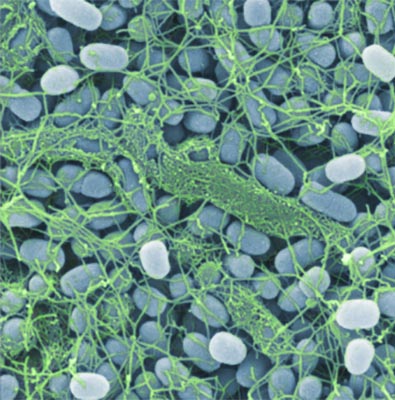
Left: Dried Ulva intestinalis, collected Venetian Lagoon ©AnneMarie Maes. Right: Curli fibers and flagella ©Matters of Activity, Humbolt University Berlin.
Weaving and tissue are also of fundamental importance in microscopic worlds: bacterial cultures establish biofilms, i.e. multicellular collectives embedded in a dense extracellular matrix of interwoven nanofibers that protect against hostile environment (such as predators and antibiotics). These networks function as filters of environmental influences, but also regulate their own energy balance and establish a basal signaling system. Such material and symbolic tissues are challenging objects of research in molecular and cell biology as well as in medicine. In addition, structures and processes in microbial biofilms, can also inspire the design for smart materials.
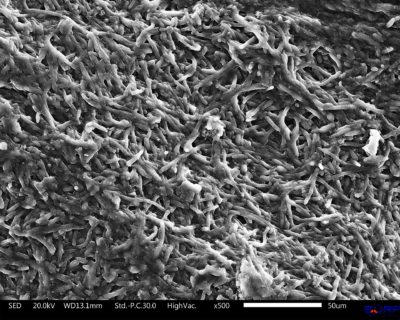
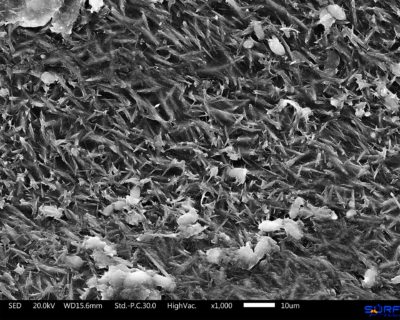
Left: Young, freshly woven microbial skin. SEM x500. Acetobacter xylinum and yeast. Right: Old, dried and brittle microbial skin. SEM x1000. Acetobacter xylinum and yeast.©SURF group VUB
The tissue of the skin: (cfr. Intelligent Guerrilla Beehive)
The woven microstructure of the dead cells in the outer layer of skin allows the actuation of the skin as a filter in response to humidity. The skin is a matter of activity due to its structure. If one translates this interaction of material, form and function into the abstraction of a mathematical object, then one obtains a spatial structure of interwoven lines that is complicated, symmetric and chiral.
In nature, such complicated woven patterns are often constructed via templating onto two-dimensional hyperbolic membranes, with protein fibers growing onto the resulting scaffold. The woven geometry envisaged in the project is the means and prerequisite for a series of interdisciplinary experiments on woven, braided or knitted structures that bring together Biology, Material Sciences and Design, but also Anthropology and Cultural Studies.
https://www.matters-of-activity.de/en/research/projects/55/weaving
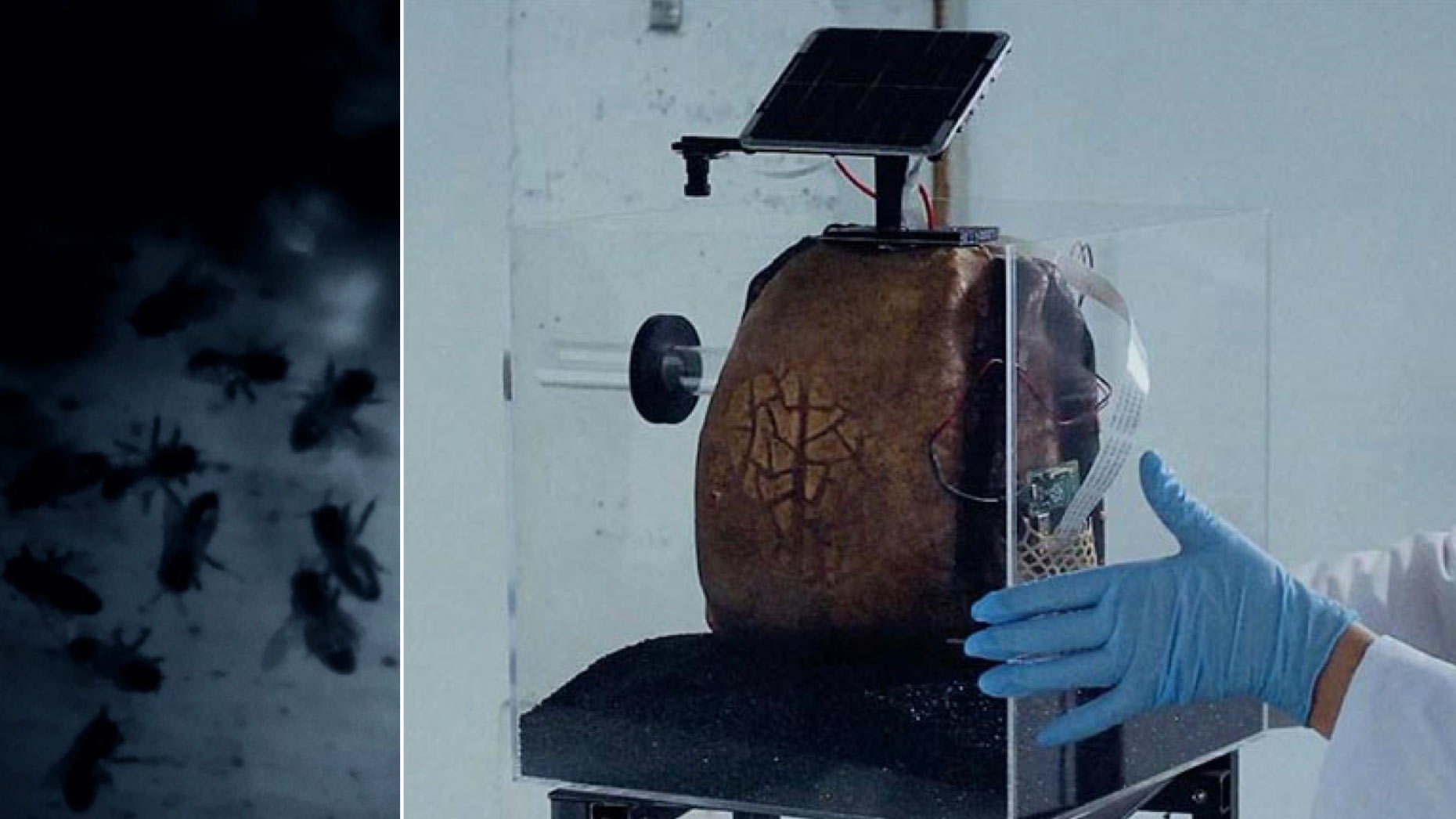
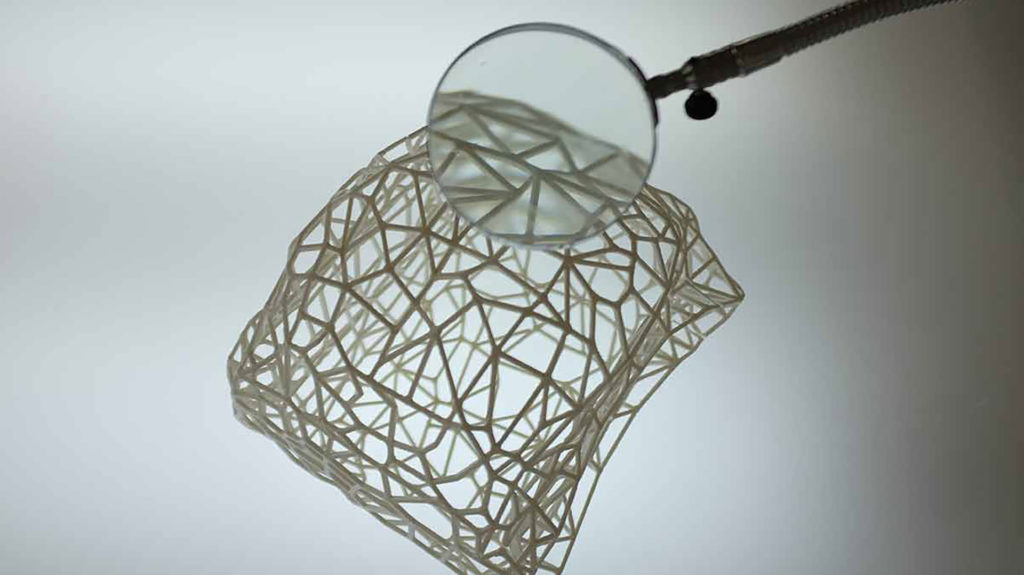
Left: The Intelligent Guerrilla Beehive, grown by nature (cellulose skin grown by Acetobacter xylinum and yeast). Right: 3D skeleton of the beehive. ©AnneMarie Maes
The manufacture of fabric and its underlying logic of interlacing, interweaving, winding or felting offers a unique assembly principle with distinctive material continuity and the potential for structural, geometrical and performative variance throughout the surface. The behavior of the overall material is not only dependent on the textile construction method but similarly influenced by fiber and yarn properties.
Experimental objects in Materials Sciences as well as biological systems are being looked upon as role models. Biology offers myriad examples of fibrous materials where local material gradients and heterogeneous tissue generate highly efficient and optimized structures. They adapt over time according to their environment and local conditions and reconfigure their internal structure according to internal stresses.

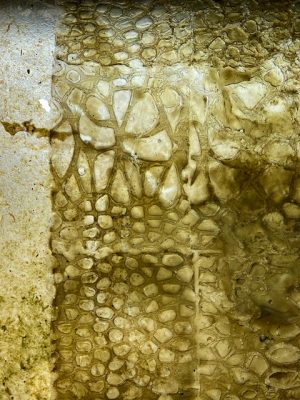
Left: Woven bioplastic. Right: Imprinted design in bioplastic. ©AnneMarie Maes